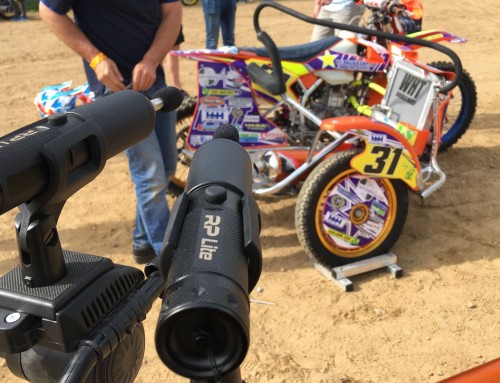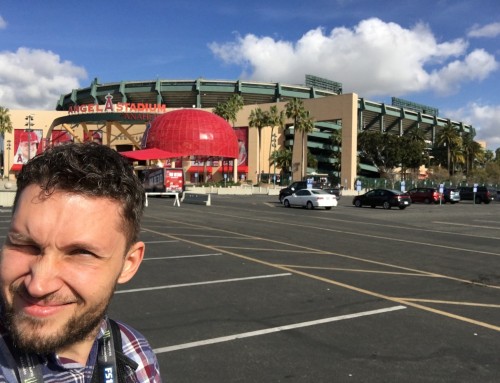It has been less than 3 months since Race Patrol Lite prototype premiered. And with thorough testing during that time we were able to also bring a brand new production unit to show and demonstrate to everyone interested. So, the stage was set and Race Patrol Lite was ready to be released to the public.
The first stop of the tour was MXGP of Americas at the Charlotte Motor Speedway dirt track. Since it was held at this location for the first time, the familiarity of the event has not settled in with everyone. Situation being new and exciting, everyone was eager to get going and things got underway very fast already on Friday. Starting with Technical Control where it was time for us to unveil the release version of the Race Patrol Lite. It was very exciting to see people ask questions, but the first reaction was nothing short of priceless. The fact that the Race Patrol unit with its size and obvious technical intricacy could be replaced by a much smaller and conveniently sized unit, was simply unimaginable. Especially after hearing that the Race Patrol Lite does all the things that the Race Patrol does*. So the end conclusion was that the system must work well, because the FIM has been using the Race Patrol throughout the MXGP season and have been very happy with it. Inquiries and thoughts were exchanged and the more people learnt about the Race Patrol Lite, the more they were eager to see it in action. And since all the teams from the GP of Americas were to participate at the MXGP of Glen Helen, it was a logical choice to organize multiple demonstrations and real-life tests on bikes at that event. Which brings us to our second part of the tour which is the historic Glen Helen GP.
Set in a hilly area of the Glen Helen Park in San Bernardino, Glen Helen racetrack offers some of the most spectacular climbs and descends in the MXGP calendar. The Glen Helen dirt track complex doesn’t feel new but feels well used and homely, which is always special. As soon as I got acquainted with the layout, I headed to Technical inspection where I set up Noise Patrol Lite. The best experience was running Race Patrol Lite in parallel with FIM’s Race Patrol system. The level and RPM accuracy of Race Patrol Lite was something worth talking about. Following the Technical inspection mandatory sound testing, it was time to do some demos to the teams. And in each case, Race Patrol Lite proved to be worth all the buzz. Accuracy, reliability and ease of use impressed every time. Especially with the capability to do the exact same test as the FIM officials do with their Race Patrol system.
Each time our affiliate Michael and I left a demo session, we were smiling and talking about the potential this could have in terms of overall noise reduction, while teaching the teams how to squeeze more out of the bikes even if they are not factory teams with massive budgets.
Sunday was filled with excitement not only because of racing, but also because ultimately we knew we are helping the sport evolve and overcome critical obstacles to keep it attractive for racers and communities alike.
Our trip came to an end, but this was just a beginning in so many ways. In short, Race Patrol Lite is here making the 2M max a great but above all fair method to measure Race Bike noise.
- Performing 2 m max test with Race Patrol Lite and Race Patrol simultaniously
- Luka demoing Race Patrol lite to team Kawasaki
- Luka with Mike, our USA distributor
- Race Patrol Lite resting in the dirt after a hard day’s work
*At the stage of introduciton no extra modules of the Race Patrol unit have been utilized and thus a complete feature comparison is possible.








